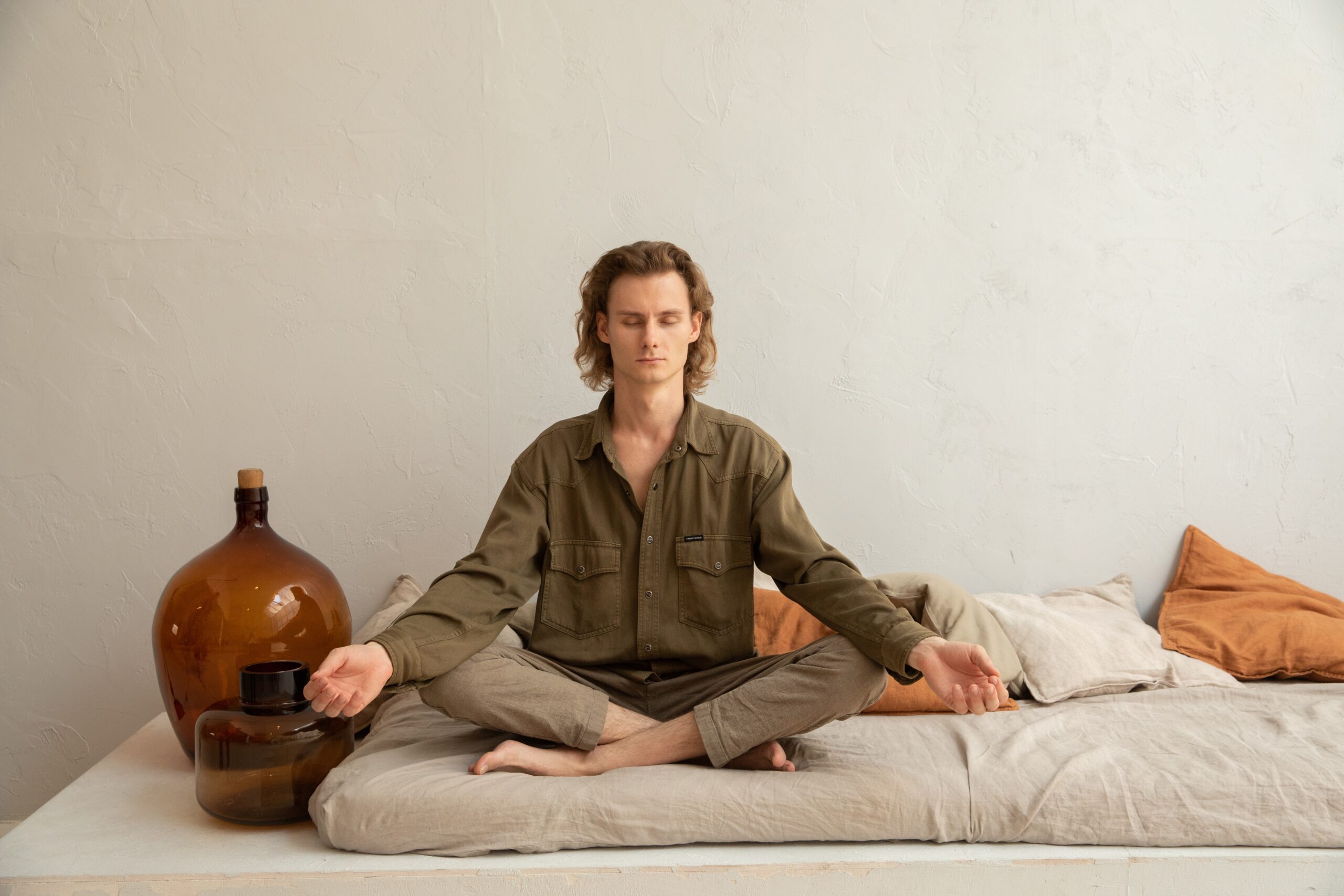Author
Barry Shore

Share
Author
Barry Shore
Share
Unlocking the Power of Meditation: A Comprehensive Guide to Lowering Stress Levels
We all have stress in our lives, but many of us don’t know how to effectively manage it.
Meditation is a great way to reduce stress and relax the mind and body. But what exactly is meditation?
How do you do it? And what are the benefits?
In this blog post, we will discuss these questions and provide some tips on how to start meditating today!
What is Meditation and How Does it Work

Meditation is an ancient practice that has been used for centuries to help people reduce stress and increase their wellbeing.
It involves focusing your attention on the present moment, allowing thoughts and feelings to come and go without judgement. The goal of meditation is to calm the mind, relax the body, and create a sense of inner peace.
Meditation works by allowing your body to enter a state of deep relaxation. This can be accomplished by focusing on your breath, repeating a mantra or phrase, visualizing calming images, and releasing any tension in the body.
Once you’ve achieved this relaxed state of mind, you can begin to observe your thoughts without judgement and let go of any stress or negative emotions.
Benefits of Meditation
Meditation is a powerful tool to help people reduce stress, relax the mind and body, and create a sense of inner peace.
It works by allowing your body to enter a state of deep relaxation and by focusing on your breath, repeating a mantra or phrase, visualizing calming images, and releasing any tension in the body.
The benefits of meditation are numerous and include improved mental clarity, enhanced emotional wellbeing, better sleep quality, increased self-awareness, improved decision making abilities, greater resilience to stressors, increased concentration and focus levels.
Meditation can also help reduce anxiety levels and improve physical health by reducing blood pressure and heart rate.
The practice of meditation allows for time for reflection which can lead to more meaningful relationships with others as well as more purposeful decisions in life.
Through meditation we can become more aware of our thoughts and feelings in the present moment so that we can better manage them when faced with difficult situations.
And regular practice of meditation can deepen our spiritual connection with ourselves as well as provide us with an opportunity to explore our inner world.
Meditation has been proven to be an effective tool for reducing stress levels while increasing mental clarity and emotional wellbeing.
It is easy to start incorporating this practice into your daily routine–all you need is a quiet place where you won’t be disturbed for 15-20 minutes each day!
Tips for Starting a Mediation Practice

Meditation can be a great tool to help manage stress, increase wellbeing, and find inner peace. To get the most out of your meditation practice, there are a few best practices to follow.
- It is important to set aside time each day for your practice. Finding even just 15 minutes in your day can make a big difference in creating peace and balance within yourself.
- Find a comfortable and quiet space for your practice. This could be a dedicated area of your home or outside in nature where you won’t be disturbed.
- Create an intentional mindset before beginning your practice. This can include setting an intention or goal for the meditation as well as taking deep breaths to relax the body and mind.
- Focus on your breath when meditating. Being mindful of your breath allows you to stay present in the moment while releasing any tension or stress in the body.
- Give yourself permission to let thoughts come and go without judgement during meditation. It is natural for thoughts to come up but try not to get caught up in them—simply acknowledge them before returning back to focusing on the breath or mantra used for meditation.
- Finish off with gratitude at the end of each session by expressing thankfulness for having taken time out of your day for self-care and relaxation.
- It is important to remember that every session is different and that’s okay! Even if it doesn’t feel like you ‘achieved’ anything from your practice today, know that it still had a positive impact on you! With consistency and dedication, over time the benefits of meditation will become more evident as you begin to notice changes in how you think and feel both during and after each session!
Different Types of Meditation Practices

There are many different types of meditation practices that can be used to reduce stress and increase wellbeing. Some of the most popular types include mindfulness meditation, guided meditation, mantra meditation, visualization meditation, and loving-kindness meditation.
Mindfulness meditation is an important element of Buddhist philosophy where one seeks to gain insight into their own thoughts and feelings by focusing on the present moment (i.e., not dwelling in the past or worrying about the future).
This type of practice involves bringing awareness to your bodily senses, noticing your thoughts and emotions without judgment, and returning back to focus on the breath when distracted.
Guided meditation is a great way for beginners to get started as it involves being guided by an instructor through a series of steps such as deep breathing, relaxation techniques, imagery or mantras. This type of practice provides structure while still allowing enough freedom for personal interpretation.
Mantra meditation is a type of practice that involves repeating a specific phrase over and over either aloud or silently in order to achieve a sense of inner stillness. The phrase can be anything from a positive affirmation such as ‘I am worthy’ to reciting ancient Buddhist mantras like ‘Om mani padme hum’. Mantra Meditation serves as a way to relax the mind while providing comfort and clarity simultaneously.
Visualization Meditation is another popular form of practice which focuses on using mental imagery as well as sounds to create calming scenes in one’s mindscape. Examples include visualizing yourself in a peaceful forest or lying on a beach listening to waves crashing against the shoreline – all with the aim of calming down physical tension while clearing out mental chatter.
Loving-kindness Meditation is rooted in Buddhist traditions that involve cultivating compassion towards oneself as well as others through repeating kind phrases directed towards oneself and those around us. During this practice one often imagines sending out love and goodwill into the world – ultimately aiming for greater emotional wellbeing for all involved!
Conclusion
Meditation is an ancient practice that has been used for centuries to reduce stress, increase awareness and foster emotional wellbeing. It is one of the most powerful tools we have at our disposal when it comes to improving our mental and physical health.
There are many different types of meditation practices that can be utilized in order to achieve a sense of inner peace, harmony and relaxation.
Mindfulness meditation is a form of Buddhist philosophy where one focuses on the present moment without dwelling in the past or worrying about the future.
Stay in the loop
